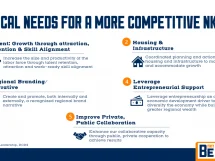By Lorie Hailey
(Editor’s note: This is part 14 in our series about how Kentucky’s business leaders are responding to the challenges presented by COVID-19. See the full report.)
 Financial advising and insurance benefits firm HORAN took early action to help keep its employees safe from the spread of COVID-19 and provide education and encouragement to its clients.
Financial advising and insurance benefits firm HORAN took early action to help keep its employees safe from the spread of COVID-19 and provide education and encouragement to its clients.
HORAN is headquartered in Cincinnati and has 140 employees in three other offices, in Fort Mitchell, Ky., Columbus and Dayton. The company specializes in employee benefits consulting, life and disability income insurance, wealth management, individual health and Medicare, and financial and estate planning.
Though the business is recognized as essential, the majority of Horan’s employees have been working from home since mid-March to help promote social distancing, said Shannon Schumacher, account executive for HORAN’s Kentucky market. Its offices remain open with limited staff, but access to all of HORAN’s building is limited to keep clients and employees and their families safe.
“We’ve found new and different ways to do business,” Schumacher said. “We’ve utilized our technology resources to host virtual meetings with our clients and partners to continue to move forward to support them with their health benefits, retirement planning and life insurance needs.”
Schumacher shared more about HORAN’s response to the challenges of COVID-19 for our Making It Work series.
The Lane Report: How are you helping your clients navigate the unknown waters of this global pandemic?
Shannon Schumacher: We have reached out to all clients in a variety of ways – through phone calls, emails and webinars. We communicate with our clients and partners from a corporate perspective twice a week. Our account managers, client specialists, relationship managers and wealth managers have been working individually to help clients through these unchartered waters. As of April 17, we have hosted nine webinars that have helped us educate on a variety of issues impacted by COVID-19, including the CARES Act and its impact on health and retirement plans; the impact on the 2020 election and legislative priorities that could impact the employee benefits industry; and a weekly webinar series on Fridays to discuss the economic outlook and provide a market update. We’ve also developed a landing page on the HORAN website that serves as a hub of COVID-19 resources to support our clients and their employees.
The Lane Report: Are you receiving a lot of calls from clients are worried about their investments? How do you reassure them?
Schumacher: Over the past six weeks, the phones are constantly ringing from clients worried about their investments. According to Michael Napier, vice president of wealth management at HORAN, “Investors may be tempted to make significant tactical changes out of a concern over further market drops. We caution against making broad changes as reactive decisions can impair the effectiveness of a thoughtfully designed investment strategy.”
TLR: What was required to get your staff converted to telework? Did you have to purchase new equipment or conduct special training for employees? Are all Horan employees still working?
Schumacher: Over the past year, we’ve invested significantly in our technology and digital resources. We were already established in a virtual desktop environment that allowed us to access work remotely and invested technology to host meetings virtually. We were able to make this transition seamlessly. Employees who have access to secure client information have been trained to follow specific guidelines to access those documents remotely. All Horan employees are still working, just working differently.
TLR: What were the biggest challenges in getting things set up?
Schumacher: Since our technology was already in place to work remotely the transition was very smooth. The biggest challenge we face is that we are in a relationship business; HORAN employees enjoy having face-to-face meetings with our clients and partners and genuinely care about them, their business and their employees. We are accustomed to an environment of collaboration, and we’ve had to find new ways to collaborate. We are definitely looking forward to getting back to the office and meeting in-person with colleagues and clients.
TLR: What is a typical workday like with your telecommuting workforce? Do you have video meetings or conference calls? Is there a daily check-in? Do you use any special messaging software to communicate?
Schumacher: Many of our meetings are business as usual through virtual meetings and conference calls. HORAN follows a business model that involves daily huddles with our teams so they can focus on established metrics, goals for the day and support needed from the team. This model enables us to be proactive with client service and ensures clear communication around deliverables. We utilize a variety of tools for internal and external work and meetings. We use Jabber, Microsoft Teams, WebEx and OneCall Now. In addition, we host a response team daily huddle with a core group of leaders that meets daily to provide key updates, align client activity and ensure staff engagement.
TLR: What has been the reaction from staff?
Schumacher: Overall, our staff has proceeded business-as-usual since we implemented the work from home standards. We continually check in on our staff through one-on-one touchpoints and employee surveys. This is to ensure employees have what they need to work effectively, to uncover any potential issues and to make sure our employees continue to feel connected. Earlier this year, we launched an employee recognition tool called Kazoo. This platform allows employees to recognize each other for the work they have done that has gone above and beyond, when they’ve pitched in to help outside of their job responsibilities, or just an opportunity to be recognized for collaboration on projects. This tool has helped keep morale up and employees connected to each other in a time where we aren’t physically together.
TLR: What tips do you have for other companies trying to make this a smooth transition and have success?
Schumacher: Our human resources team communicates with our employees daily and keeps a very open line of communication. This is an important element when employees feel disconnected working from home and there is so much uncertainty of when this stay-at-home order will be lifted. It is not only important to communicate what is happening within your business but to show empathy for employees who are juggling a new work from home setup, helping their children with schoolwork and taking care of them. We share daily tips such as how to make your home workspaces more efficient, health and wellness resources, and suggestions for the kids at home.
Technology is key. If we had not invested in technology resources, this adjustment would have been even more of a challenge.
And finally, have some fun! HORAN implemented a step challenge, photo contest, daily trivia to get to know colleagues better, weekly yoga facilitated by a HORAN employee and other activities to establish connectedness in this work from home environment.
TLR: Is there anything else you would like to add?
Schumacher: We are learning a lot right now about how, as an organization, we can work in a more organized and efficient way when all this is over. We are using this time of physical distancing to plan for how we continue to deliver better for our clients and partners now and in the future.
Share your story
We want to hear how business leaders across the state have responded to the challenges presented by COVID-19 and the efforts to stop the spread of it. If your business would like to share its story, email Lorie at [email protected].




















Add Comment